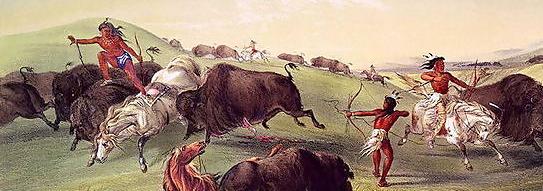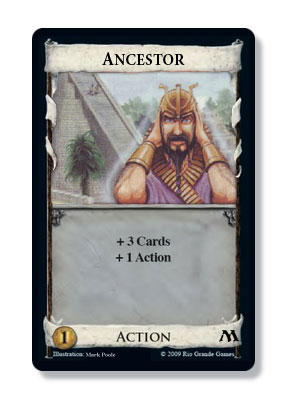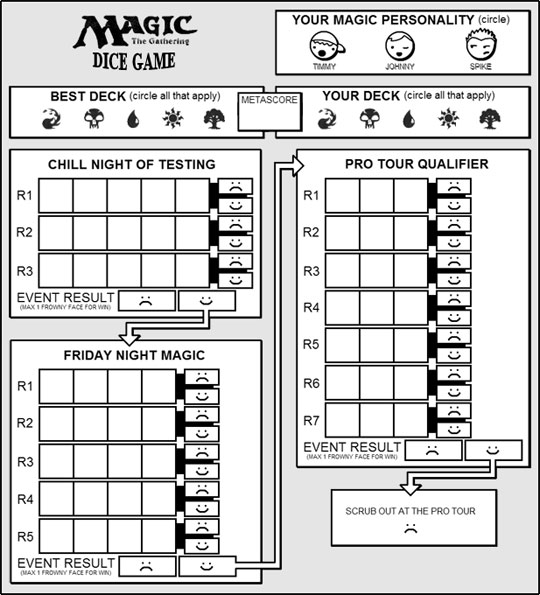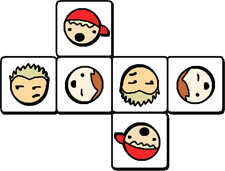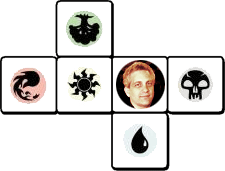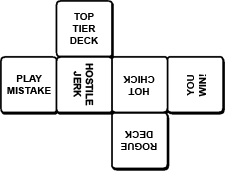It’s been a long night at FNM. Your trusty blue/white deck crapped out on you in the quarterfinals, and all you have to show for it is your 8th place prize of one M10 pack. If only you had more [card]Glacial Fortress[/card]es, you wouldn’t have been color screwed! Not to mention, you’re using [card]Serra Angel[/card]s, because you can’t afford [card]Baneslayer Angel[/card]s. You mutter a silent prayer to yourself as you peel open your prize pack. You toss out the tip card and s l o w l y slide up the card in the back, hoping beyond hope that karma will favor you after your last match. You first see the color of the card – it’s white! – and your heart beats faster. You turn the card some more and reveal the casting cost. One white symbol, two white symbols.. and a 3! Could it be? You quickly pull out the card, elated that you finally pulled the Baneslayer you’ve been dreaming about…
…only to find you just pulled your fourth [card]Lightwielder Paladin[/card].
“DAMMIT,” you yell a little too loudly in the confines of the store. “How am I ever supposed to get good cards when all I ever pull is stuff I don’t need?”
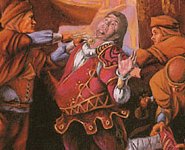
You don’t need to spend a fortune on packs or singles to get everything you want. You can turn all the bad cards you’ve got into useful things, with a little knowledge and some work. This series of articles is designed to show you how to trade your way into gold. (Or mythic!)
Part 1: Why am I trading?
It seems like a rhetorical question, but it is important to understand what your goal in this process is. Are you in it just for money? Are you trying desperately to get only the cards you need for your FNM deck? Do you want to have a little of everything, so your deck building options are open? Are you willing to trade everything away, just so you can get that [card]Black Lotus[/card] you always wanted?
This goal should be your main focus. If your biggest need is [card]Baneslayer Angel[/card]s, you should say so at the beginning of the trade. If they don’t have any, you should trade for other things you need, or things that could be helpful in trading for Baneslayers.
Part 2: How should I value my cards? How should I value your cards?
One of the biggest complaints from people who don’t trade very often is that it’s so difficult to keep up with card prices. The good news is, depending on your goal from Part 1, you may not need to know more than the card you’re looking for and the good cards you have. If you’re looking for a wider range of cards, you will need to do your homework. Just remember, the more effort you put into learning card prices, the more it will pay off. You don’t want to lose an opportunity to bulk up your trade binder just because you don’t know what [card]Stifle[/card]s are worth.
So how can you tell what cards are worth? The keys are to use several different sources, and to understand the concept of ‘ranges.’
Sources
Let’s say you’re looking for some [card]Ajani Goldmane[/card]s for your Kithkin deck. You know you can pick up a playset on eBay for $40, but you don’t want to deal with the hassle. Your favorite online store sells them for $15 each. Your local card shop has them for $17. Even if you’re not interested in buying them, it’s crucial to understand each option.
eBay: This one will tend to be the cheapest option, but it is also the biggest effort. On a normal auction you will need to wait until it finishes, and hope nobody outbids you before then. Somewhat risky, but potentially the best deal.
Online stores: This will run you a lot more than eBay, but it’s far more trustworthy. You still need to deal with shipping, but things are guaranteed to be in stock somewhere.
Local shop: More than likely the most expensive option, but you get your cards immediately. You may need to worry about cards not being in stock. Possible discount if you trade or sell cards in, as well.
So, trade-wise, knowing these three sources can help you out tremendously. If someone is willing to trade you Ajanis but value them at 20, you know you can get a better deal elsewhere. Likewise, if someone thinks your [card]Liliana Vess[/card] is only worth $4, knowing that a playset runs about $22 on eBay will limit your losses. Using one source for everything is usually a good idea, as everything will be relative.
In summary:
Cards shouldn’t be valued less than the cheapest purchase option.
Cards shouldn’t be valued more than the most expensive purchase option.
Ranges
So, you’re prepared with the prices on the cards you’ve got, and the cards you want. Armed with this knowledge, you can now ascribe a “fair value” for your cards.
It’s important to understand that different people will value their cards differently. In the course of a day trading, you might hear values on Ajani from, say, 12 to 20. So, obviously trade with the guy who values them at 12, right?
It’s not always that easy. That 12 is still an arbitrary number when you’re not dealing with cash. What’s important is how that value compares in relative terms to what you’re trading away. For instance, let’s say Mister Ajani at 12 wants [card]Wilt-Leaf Liege[/card]s at 4 each. You can thus trade three Lieges for one Ajani. But, Miss Ajani at 20 also wants Wilt-Leaf Lieges, and is willing to value them at 8 each. You can trade three Lieges to her for an Ajani, AND a [card]Siege-Gang Commander[/card]. Even though one person valued Ajani much lower than the other, it was still better to trade with the lady who valued Ajani the highest.
The key here is ranges. You want to try to trade for cards on the low end of a range, and trade away cards on the high end of a range. Ajani for 12 sounded like a great deal, but you weren’t getting the right value on your cards to make it worth it. Finding the right mix of cards that lets you take advantage of both sides of a deal is an important concept when trading, and will lead to a big trade binder over time.
In summary:
People value things differently. Don’t just leap at the first deal if you’re desperate, try to get a good one.
Part 3: What should I trade away? What should I trade for?
Even armed with all this pricing knowledge, you still need to know what your customers want. It does you no good to trade with somebody if you don’t have what they want. Typically, the cards someone will want will be closely related to what formats are popular in the area. If your FNM every week is Standard, you should expect Standard cards to be in high demand. During an Extended PTQ season, maybe you should put those Academy Ruins back in the binder. Going to a Legacy Mox tournament? Equip yourself accordingly, and so on.
Likewise, it is also good to know what your customers DON’T want. You are going to have a much easier time getting those Leylines of the Void from a Standard player than from someone who actively plays older formats, and that Legacy player probably cares a little less about their [card]Bloodbraid Elf[/card]s than most people. Try to ‘feel out’ the trader. Mark Rosewater’s Timmy/Johnny/Spike/Vorthos paradigm will help tremendously here. If he’s looking for some [card]Kalonian Behemoth[/card]s, he’s probably not going to worry about trading away those [card]Ethersworn Canonist[/card]s he doesn’t use. Johnny will LOVE the [card]Doubling Season[/card] that Spike doesn’t care about. Know thy customer.
Another small note on non-rares: It is often very much worth it to put good commons and uncommons in your binder. Believe it or not, people are going to want those extra [card]Volcanic Fallout[/card]s a lot more than the [card]Scepter of Insight[/card]s you’ve been carrying around forever. Even an extra [card]Mulldrifter[/card] as a throw-in could make the difference between a completed trade and a lost opportunity. Sort out those old draft decks and you could find a gold mine you never knew existed!
In summary:
Put things in your binder that people want!
Part 4: Trading up vs trading down
“That’s all great,” you say, “but all I’ve got are a bunch of crap rares. The only guy left who wants my [card]Manabarbs[/card] has even worse stuff than me! What should I do?”
While card values are the most important piece of knowledge when trading, it’s also relevant to know how much demand there is for cards. [card]Baneslayer Angel[/card]s are worth so much right now through a variety of factors:
- It’s mythic, and thus difficult to open (Low supply)
- M10 is in somewhat limited quantities (Low supply)
- It’s an angel (Timmy Demand+)
- It’s really good (Spike Demand+)
- M10 just came out, and Angel’s not a reprint, so people don’t have them yet (Demand+)
Manabarbs, on the other hand:
- Normal rare, not mythic (Supply+)
- Been reprinted many times (Supply+)
- Doesn’t see play in major decks (Demand-)
You should understand the following: the lower the supply, and the higher the demand, the more a card is worth. The supply factor is going to change the value of a card, but the demand is what you’re interested in. It won’t be difficult for you to find someone that wants your extra [card]Baneslayer Angel[/card], so you should try to get the best possible deal for it. But if someone happens to want your [card]Manabarbs[/card], you should really try to get something useful for them, even if it seems like you’re not getting a great deal. If you find someone who will take that playset of Manabarbs at 1 each for a [card]Ranger of Eos[/card], even if the Ranger is really only worth around 3, you should consider it. There are lots of people who play or want Ranger of Eos and not so many that want Manabarbs. You might not get the opportunity again to trade that crap rare away, and a card that never leaves your binder is always worthless.
Trading several lesser valued cards for one or few higher valued cards is called ‘trading up.’ You will typically have to trade a little more than the value you’re hoping for to do this, mostly because the higher valued cards could at least be sold for some decent money, where you’d be lucky to get a quarter each for those [card]One with Nothing[/card]s you’ve had for 5 years. Conversely, doing the opposite, or trading a big card for several small cards, is ‘trading down.’ You can often get a little something extra out of this for the exact same reason. If you are trading away that super awesome foil textless [card]Cryptic Command[/card] at 20 for some $5 Sanity Grindings, you can probably get them to throw in that $2 Time Sieve you want too – the $2 card isn’t likely to deter them from getting a $20 card.
In summary:
If someone wants your crap rares, get whatever you can out of them. You might not get another opportunity for a long time.
If someone wants your expensive cards for cheaper cards, you can usually get more value out of them.
Part 5: Why are cards worth this?
As shown above, supply and demand are the major factors in determining a card’s value. But how can you determine these?
In general, demand is going to be directly proportional to the popularity and number of decks running the card. [card]Cryptic Command[/card]s have been in huge demand in Standard, because so many decks run them – and they typically need four each. [card]Cruel Ultimatum[/card], on the other hand, is a fantastic card, but is seemingly very cheap for how good it is. Cruel has several factors working against its value; it’s not in very many decks (indeed, only decks that can support UUBBBRR!), decks that do run it tend not to run the full 4 (sometimes only 1 or 2), and it’s in an Intro Pack (meaning it’s in very wide supply and trivial to obtain).
Try to pay attention to new decklists that spring up. If a new deck suddenly starts making a lot of PTQ top 8s, expect cards in it to jump in value. Same with Pro Tour and Grand Prix winning decklists.
Preconstructed decks/Intro Packs: These increase the supply of certain rares, but some of the very best cards are still unaffected by these, the major example being [card]Umezawa’s Jitte[/card] – it merely increased the price of Rats’ Nest! The cards to note here are the middle rares, stuff in the $3-7 range – see [card]Mystic Snake[/card] and [card]Mirari’s Wake[/card] for older examples.
Notes on foils: Some people really like them, and some people really don’t. In general, a foil version of a card is worth roughly double what the non-foil version is worth. A major exception will be any kind of promotional cards, which will have a different supply – for instance, they gave out promo [card]Figure of Destiny[/card] cards like candy at Halloween, but there are very few Extended art [card]Mutavault[/card]s in existence. Consult your favorite price source to get a bead on these.
Vintage and Legacy foils are also a notable exception in value. These players really love to pimp out their decks, and someone who’s got the money for a full set of Power 9 usually has the money to get those sweet foil [card]Goblin Welder[/card]s too. Especially take note of cards that are only good in the older formats due to card interactions, such as [card]Forbidden Orchard[/card].
Rare sets: Alpha and Beta were the first sets in Magic way back in 1993. Cards from these sets command a large premium over later reprints of cards.
Arabian Nights/Legends: These sets were in somewhat short supply and have a number of highly sought after cards. There was more Italian Legends printed than English, and thus English is worth more.
Portal 3 Kingdoms: This set was only printed in the APAC territories, and there is much more Chinese and Japanese product in circulation than English. English tends to be worth more.
Foreign cards: Generally, people seem to prefer English cards. Cards from Asian countries can be an exception, especially in foil. Asian foils are some of the most expensive card varieties you can find.
Card condition: It should go without saying, cards in worse condition will be valued less. Don’t ever keep those old draft decks in your pocket, or in rubber bands! These are great ways to ruin the value of your collection. One note to mention is that with the most expensive old cards (power, especially) people may actually look specifically for played versions of the card, in order to pay less for it.
Part 6: Format rotation
You’ve finally managed to trade your way into playsets of every special land in Standard. Your trusty blue/white deck’s been doing well at FNM and you’ve got all the cards you could ever want for it. You could even build two more decks with all the cards you’ve managed to collect.
Then, suddenly, a new block comes out. Half of your cards suddenly plunge in value. Those 7 dollar lands you had no trouble trading away before have dropped to $2 each. What just happened? How do you avoid this?
The trick is knowing when to “get out” of a block. You will have to balance the utility of getting the best trading value out of your cards versus being able to use them in tournaments. If you wait until the week before the prerelease, nobody’s going to be looking to build decks for a format that will rotate in two weeks. If you dump your cards just after the final set of a block comes out, you’ll get great value but might get stuck without good trade stock or having to play a bad deck for three months until the rotation comes.
It may be wise when nearing the end of a block to do some lateral trades for cards that will remain legal for longer. This way, you’ll be better prepared when the rotation comes.
After a rotation happens, those traders who forgot or neglected to get rid of their now rotated stock will be looking to dump it as quickly as possible. You can take advantage of this by trading for cards that you think will hold their value – because they are good in older formats, for instance. When the original Revised dual lands rotated out of Extended, people were ditching them at unheard of prices, as low as $8. People who picked them up at that time made a fortune in the long run.
In summary:
Be aware of formats rotating and try to make trades with rotation dates in mind.
Part 7: Where should I trade?
If you are lucky enough to live somewhere with lots of Magic players, you should partake in all the different types of tournaments. As alluded to in part 3, trading at a Standard tournament and trading at a Legacy tournament will give you different prices on cards, and you can put this to your advantage. Take the Standard player’s cards that are good in Legacy, and trade them to the Legacy player, who then gives you good Standard cards to trade back to the other guy.
If you mostly just trade at the same store, for instance your local FNM, you may run out of potential customers very quickly as week to week most people’s collections and desires won’t change much. Maybe once a month, drive a little further to that other FNM. You’ll diversify your collection, which is always a good thing.
The bigger the tournament, the more lucrative the trading opportunities. If you can, try to venture out to those big prereleases, and Pro Tour Qualifiers. You’ll be surprised how many people can show up to these! If you’re REALLY lucky, there will be a Grand Prix or a Pro Tour within driving distance, which can be a gold mine.
If you’re planning on attending a major event, try to trade for cards relevant to its format in the weeks preceding it. Someone who shows up with a dozen of the biggest chase rare in Standard is going to get whatever they want at a Standard GP.
In summary:
Standard players often don’t care about their older cards. Get them at a discount!
Part 8: Don’t be a douche
“Man, I totally wrecked that kid. Not only did I just crush him round 3, but I traded with him afterwards and he had no idea what his [card]Reveillark[/card]s were worth. I got a full playset for a [card]Lurking Predators[/card]!”
‘Dude, that was my little brother. You’re a douche, and we’re never coming back to this store.’
You just lost yourself two potential repeat customers and made a bad name for yourself at your favorite FNM hangout. You make yourself look bad when you act like a punk and help give all traders a bad reputation. Don’t do it. You want to encourage participation, not discourage it. One bad deal with somebody and they will never trade with you again.
If you have a good reputation, you can really get some good deals. Make a little kid happy by trading him 10 crap rares for that dual land he just drafted. Trade fairly with your friends. When word gets out that you give good deals, people will come to YOU with the goods.
Part Extra: Miscellaneous tips
DON’T EVER LOSE TRACK OF YOUR BINDER. Take extra, overprotective care of it. If you’re playing a match, put your chair leg over your backpack strap, so nobody can pull it out from under you.
Try not to trade with more than one person at a time. It’s trivial to make sure one person’s not palming cards from you, but it’s much harder to keep track of multiple people/binders at once. Don’t get too greedy!
The best times to trade at a constructed tournament are just before it starts, and just after it ends. You can get some really great values on cards people desperately need for their decks. After the tournament’s over, either people are disillusioned with their deck and want to trade away the pieces, or they switch from ‘play mode’ to ‘trade mode’ and are more willing to bust out the binder.
If a store has a buy list, make sure you know the prices. You might get lucky and be able to trade cheaply for cards that you can directly sell.
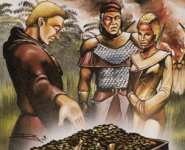
I hope some piece of this article was helpful to you. Keep it fair, and keep it fun!

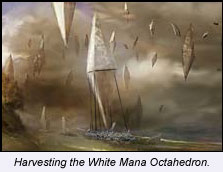 TAZEEM, ZENDIKAR — The Large Hedron Collider was successfully loaded yesterday with a second White Mana Octahedron, say Lighthouse scientists.
TAZEEM, ZENDIKAR — The Large Hedron Collider was successfully loaded yesterday with a second White Mana Octahedron, say Lighthouse scientists.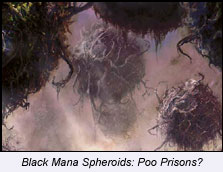 The stench of the goo lent weight the hypotheses of other merfolk scientists: that Black Mana Spheroids are the droppings of ancient, colossal zendi-bunnies.
The stench of the goo lent weight the hypotheses of other merfolk scientists: that Black Mana Spheroids are the droppings of ancient, colossal zendi-bunnies.
